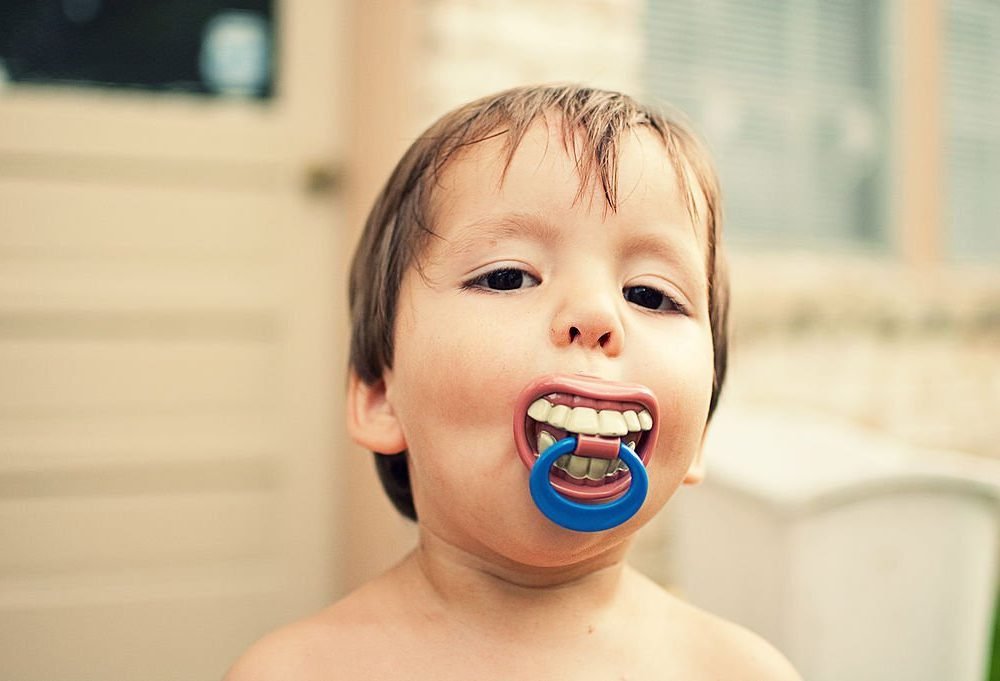
Last Updated on August 28, 2025 by Beth Skwarecki
Pacifier teeth, also known as “bottle mouth” or “baby bottle tooth decay,” refer to dental issues that can arise in children who use pacifiers or bottles for prolonged periods. These dental problems can include tooth decay, misalignment, and other issues affecting a child’s oral health.
Pacifier teeth can be a significant concern for parents, but fortunately, some steps can be taken to prevent and treat them. In this article, “how to fix pacifier teeth,” we will explore the causes, signs and symptoms, prevention, treatment, and when to seek professional help.
What Are Pacifier Teeth?
Pacifier teeth refer to a dental condition that can occur in young children who use pacifiers or bottles for extended periods. Using pacifiers or bottles can cause teeth to shift, leading to misalignment and other dental problems. “pacifier teeth” is often used interchangeably with “baby bottle tooth decay,” which refers to tooth decay caused by prolonged exposure to sugary liquids such as milk, juice, or formula.
Pacifier teeth can be a significant concern for parents as they can affect a child’s oral health and overall development. However, pacifier teeth can be addressed effectively with proper prevention and treatment.
What Are The Causes Of Pacifier Teeth?
The primary cause of pacifier teeth is the prolonged use of pacifiers or bottles, which can affect the alignment and growth of a child’s teeth. The following are some factors that may contribute to the development of pacifier teeth:
- Prolonged Use Of Pacifiers Or Bottles: The constant use of pacifiers or bottles, especially beyond the age of 2 or 3, can lead to changes in the alignment of teeth and the growth of the jaw.
- Sucking Intensity: The intensity with which a child sucks on a pacifier or bottle can also affect the development of their teeth. Strong sucking can cause teeth to move out of position, leading to misalignment.
- Bottle Contents: Prolonged exposure to sugary liquids, such as milk or juice, from a bottle, can lead to tooth decay and erosion, which can contribute to pacifier teeth.
- Genetics: Some children may be more susceptible to pacifier teeth due to genetic factors that affect the growth and development of their teeth.
- Mouth Breathing: Children who breathe through their mouth instead of their nose may be at a higher risk of developing pacifier teeth, as the constant flow of air can affect the position of their teeth and jaw.
Signs and Symptoms of Pacifier Teeth
The signs and symptoms of pacifier teeth may vary depending on the severity of the condition. Some common signs and symptoms include:
- Teeth misalignment: Prolonged pacifier or bottle use can cause misalignment of teeth, resulting in an overbite, underbite, or crossbite.
- Tooth decay: Exposure to sugary liquids can lead to tooth decay, which may appear as brown or black spots on the teeth.
- Gum inflammation: The constant pressure of a pacifier or bottle on the gums can cause inflammation and redness.
- Speech problems: Misaligned teeth can affect a child’s ability to speak correctly, causing speech problems.
- Difficulty chewing: Misaligned teeth can also affect a child’s ability to chew properly.
- Changes in the roof of the mouth: The constant pressure of a pacifier or bottle can affect the shape of the top of the mouth, causing it to become higher or narrower than usual.
Prevention of Pacifier Teeth

Prevention is key when it comes to pacifier teeth. Here are some tips to help fix pacifier teeth:
- Limit Pacifier Use: The American Academy of Pediatrics recommends that parents start weaning their children off between 6 and 12 months. Ideally, children should stop using pacifiers by age 2 to reduce the risk of pacifier teeth.
- Limit Bottle Use: Similar to pacifier use, parents should limit bottle use as children get older. Children should be encouraged to drink from cups rather than bottles after age 1.
- Encourage Healthy Oral Habits: Encourage your child to develop healthy oral habits, such as brushing their teeth twice daily and flossing regularly. Supervise your child’s brushing and ensure they use fluoride toothpaste.
- Provide A Balanced Diet: Offer your child a diet with few sugary foods and drinks. Avoid putting sugary liquids in their bottles or sippy cups.
- Regular Dental Check-Ups: Schedule regular dental check-ups for your child, starting at 1. A dentist can detect any dental problems early on and provide appropriate treatment.
Treatment For Pacifier Teeth
The treatment for pacifier teeth will depend on the severity of the condition. Here are some ways to fix pacifier teeth:
- Behavioral intervention: In mild cases, behavioral interventions may be effective. Reducing pacifier or bottle use, changing the sucking pattern, and encouraging healthy oral habits can help fix pacifier teeth.
- Orthodontic treatment: In moderate to severe cases, orthodontic treatment such as braces, a retainer, or other appliances may be necessary. The orthodontist will evaluate the child’s teeth and jaw and recommend the best action.
- Dental restoration: If tooth decay has occurred, dental restoration, such as fillings or crowns, may be necessary to repair the damage. In some cases, tooth extraction may be required.
- Speech therapy: If pacifier teeth have affected the child’s speech, speech therapy may be necessary to help the child develop proper pronunciation and communication skills.
Is Thumb-Sucking Better Or Worse?
Thumb sucking can harm a child’s teeth and mouth if it continues past the age of 4 or 5, as it can cause the same dental problems as pacifier use, including misaligned teeth, overbite, underbite, and changes in the roof of the mouth. In some cases, prolonged thumb sucking can cause more severe problems, such as speech difficulties and changes in the jaw.
However, compared to pacifier use, thumb sucking can be more challenging to control since a child can access their thumb at all times. Parents can discourage thumb-sucking by offering positive reinforcement for not sucking their thumb, but it may require more patience and persistence than weaning a child off a pacifier.
It is important to note that occasional thumb sucking, especially during infancy, is normal and unlikely to cause long-term problems. However, if your child continues to suck their thumb past the age of 4 or 5, you should consult with a dentist or orthodontist to determine if any damage to the teeth or jaw requires treatment.
FAQs
Conclusion
Pacifier use can be a source of comfort for infants and young children, but it can also cause dental problems if used for an extended period. It is essential to monitor pacifier use and wean children off pacifiers by age 2 to reduce the risk of dental issues. If your child develops pacifier teeth, treatment options, including orthodontic devices and behavior modification techniques, are available. With proper attention and care, pacifier teeth can be corrected, and your child can maintain good oral health.

Kellie covers all things dental—from oral hygiene tips to expert-backed insights on common dental issues. Kellie aims to make dental care simple and approachable, guiding readers toward brighter smiles and healthier oral habits that last a lifetime.